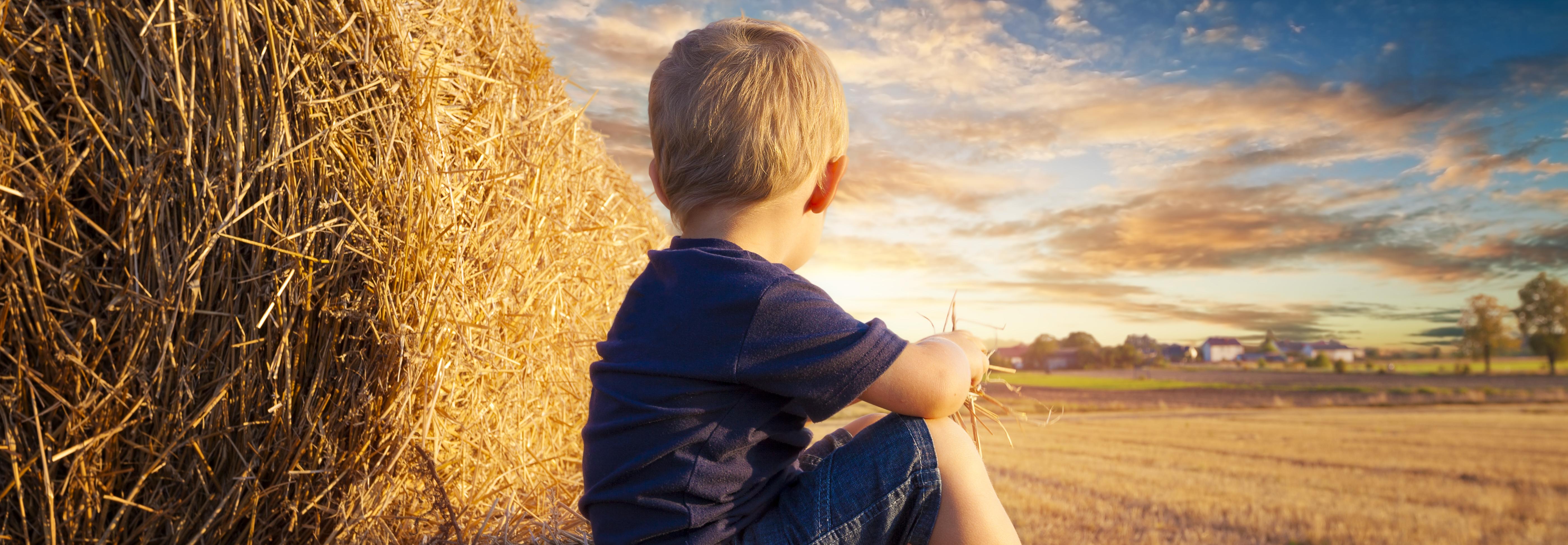
Since coming to Lantra, I have learned a great deal about the different industries that we represent, and one message has been repeated over and over throughout that time.
Farming is different.
And it is. It faces some similar challenges to forestry and aquaculture of course, particularly in terms of recruitment and the uncertainty of Brexit. However, you don’t tend to get family fish farms. Or a family forest. Meanwhile family farms are the norm, often portrayed rather idealistically in the media, with families happily working and playing together during the long summer days.
As we approach the end of the summer holidays, and as I try to balance childcare and full-time work (without my previous academic holidays *pangs*) I can only say that I have huge admiration for those who can live and work together. Which of course, is the case for most farming families. Kudos to all who manage to find that balance between work and family and do so without throwing things or forgetting which friend the playdate is with.
At the Women in Agriculture breakfast at the Highland Show, it was great to see so many children present. Okay, so it’s possible that some were there due to the practicalities and logistics of childcare, but all were engaged, and it was great to see them exposed to such inspirational and positive role models. I don’t think I have ever seen children attend a similar event in horticulture or gamekeeping for example (though would be great to hear of any!).
However, there is of course a downside to this close integration of work and family.
It is clear from the statistics that children and young people growing up in a farm environment run a greater risk of being injured or dying in an accident than their non-farming counterparts. Research shows that accidents involving younger children tend to occur because the children can act unpredictably (eg around animals or machinery), and those accidents that involve older children seem to be mainly because they have been allowed to take on more dangerous tasks.
Of course, it isn’t always the children of the farmers that are potentially in danger. Their friends are one of the groups at greatest risk of injury due to peer pressure, as they encourage each other to do forbidden things. For example, in a Swedish Study one of the mothers interviewed emphasised the increased risk when her children bring home friends to the farm: “They wanted to look cool in front of each other so they climbed up to the hay loft, even though they knew that it was forbidden. One of our girls fell down and cracked her skull. It happened so quickly. We cannot be everywhere and protect them.”
If one was prone to ‘knee-jerking’, it could be suggested that farms are workplaces and farming is not a child’s job. Children would not be safe on a building site or in an engineering plant, and so of course, they are excluded from that environment. So why should farms be any different?
Well, with the average age of a farmer being 59, anything that further excludes young people from the farm can’t be good for the sector!
Children need a good understanding of the world of work so that it doesn’t seem like a strange and scary planet which they must move to when they finish school. Where children have grown up on a farm, they tend to have a very clear picture of what a life as a working farmer will be like, and so we need more children to have this kind of experience, not less.
It is certainly a national priority to have more young people visit farms, as First Minister Nicola Sturgeon explained when she launched the £1m “Good Food Futures” education programme at the Highland Show in June:
“Scottish produce is enjoyed across the globe and Scots work in many of the world’s finest kitchens. I want people to enjoy our quality food, but I also want children and young people growing up here to benefit from it too. The Good Food Futures programe will help more children understand where their food comes from as well as benefit from it in their school meals. It will also encourage more young people to consider a career in the industry.”
The programme will do this by providing support for more farm visits – aiming to give children a better understanding of where food comes from and the career opportunities within the industry.
So, if we need children to visit farms and understand how they work, but also to be safe, perhaps —rather than exclude them — it might be a good time to review practice and the examples that the grown-ups themselves set in the workplace?
Although in most countries there are standards which set the minimum age for farm workers (normally 16), the children of farmers (and those on work experience) are often expected to ‘help out’. Indeed, many enjoy, and benefit from the increased responsibility and being ‘part of the team’. However, growing up in a farm environment can make it harder for the individuals to notice or accept the risks that ‘have always been there’ and poor practice is then perpetuated.
We know it is hard to run a family business. You need to manage the farm, but are also responsible for the finance ‘department’, human resources, health and safety, public relations, paperwork… things that in a larger company would be the role of a full-time employee with a wealth of qualifications behind them.
But health and safety is an area in which the individual can bring about the most positive change. It is possible to operate safely in the farming environment so that a good example is always set to impressionable watching eyes, and where we see poor practice, to call it out. Wearing the correct Personal Protective Equipment might be a ‘bit of a hassle’ 99 times out of 100, but the benefit it can provide vastly outweighs any initial minor discomfort.
Although educational initiatives with children have some impact, they don’t last for long, and need frequent repeating. It is therefore important to keep talking to children, parents and farmers about the risk that hazards present in the work environment. However, no preventative measure will be effective if we ourselves don’t adopt the appropriate attitude in our day-to-day activities and tasks.
Lantra’s employers’ toolkit helps highlight the importance of paying attention to health and safety and employing safe work practices.
The Farm Safety Foundation has some great resources on their website, including advice about keeping children safe on farms.
Meanwhile, over the next few months, the Wales Farm Safety Partnership (WFSP), together with all other Farm Safety Partnerships in the UK, will be urging farming families to implement practical measures that will help keep children safe on farms. The advice will be relevant to all family members, farm workers, individuals such as vets and trades people as well as members of the public who pass through.
Hopefully by following the key tips below we can ensure we all stay safe this summer. Can’t promise I won’t throw things though…
Top tips for keeping children safe on the farm and keeping the right side of the law:
- Keep children out of the workplace — create a dedicated safe and secure fenced outdoor play area for younger children who must be kept off the farm.
- Ensure children under 16 (including those on work experience or educational visits) are supervised at all times by a responsible adult whose focus is only on them and who is not undertaking farm work at the same time.
- Don’t allow a child under 13 to ride on or drive any agricultural self-propelled machines (such as tractors and ATVs) or use other farm machinery.
- Children under 16 must not drive, operate or help to operate ATVs
- You need a risk assessment if you employ young people under the age of 18. You will need to take full account of their inexperience, immaturity and lack of awareness of relevant risks
- Prevent access to dangerous areas and height
- Keep children away from machinery and vehicles
- Keep children at a safe distance from livestock
- Keep chemicals and tools properly stored, locked away and out of reach
